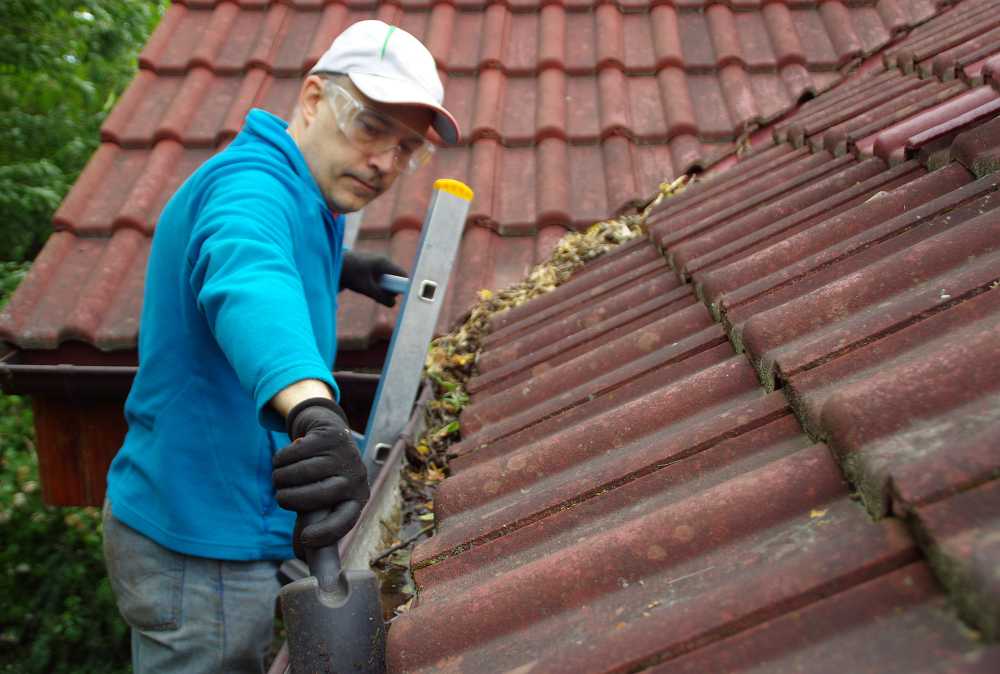Gutter cleaning may not be the most glamorous household chore, but it’s one of the most crucial. Neglected gutters can lead to numerous problems, from water damage to pest infestations. Whether you’re considering DIY gutter cleaning or hiring a professional, understanding the process, benefits, and costs is essential.
This guide explores everything you need to know about gutter cleaning, including why it matters, how to do it yourself, and when to call in the pros.
Why Gutter Cleaning Matters
Your gutters play a vital role in protecting your home from water damage. By channeling rainwater away from your roof and foundation, they prevent issues like structural damage, basement flooding, and landscape erosion. However, clogged gutters can’t do their job effectively.
Consequences of Ignoring Gutter Maintenance
- Water Damage: Overflowing gutters can lead to roof leaks, wall damage, and water pooling near your foundation, causing costly repairs.
- Pest Problems: Leaves and debris in your gutters make the perfect home for pests like mosquitoes, birds, and rodents.
- Mold Growth: Stagnant water promotes mold and mildew, which can spread to your home’s interior.
- Decreased Curb Appeal: Overflowing gutters and streaks of dirt can significantly impact your home’s appearance.
Regular gutter cleaning ensures your home stays safe, clean, and structurally sound, saving you money in the long run.
DIY Gutter Cleaning
For homeowners who don’t mind getting their hands dirty, DIY gutter cleaning can be a cost-effective option. With the right tools and techniques, it’s possible to tackle this chore on your own.
Tools You’ll Need
- Ladder: A sturdy, extendable ladder with stabilizers for added safety.
- Gloves: Protect your hands from debris and bacteria.
- Gutter Scoop or Trowel: For removing leaves and debris from the gutters.
- Bucket or Bag: To collect debris as you work.
- Garden Hose: For rinsing out the gutters.
- Protective Gear: Safety goggles and a mask to shield yourself from dirt and allergens.
Step-by-Step Guide to DIY Gutter Cleaning
- Set Up Your Ladder: Place your ladder on stable, even ground, and use a ladder stabilizer to avoid damaging the gutters.
- Scoop Out Debris: Begin at one end of the gutter and use your scoop or trowel to remove leaves, twigs, and gunk.
- Flush the Gutters: Use a garden hose to rinse out the gutters, starting from the opposite end of the downspout. This ensures clogs are pushed out entirely.
- Check Downspouts: Make sure water flows freely through the downspouts. If clogged, use your hose or a plumber’s snake to clear the blockage.
- Inspect for Damage: Check for sagging, leaks, or rust. Replace or repair damaged sections as needed.
Pros and Cons of DIY Gutter Cleaning
- Pros:
- Cost-effective if you already own the tools.
- Gives you direct control over maintenance.
Cons:
– Time-consuming and labor-intensive.
– Safety risks like falling from ladders.
- – May not address hidden gutter or roof issues.
When to Call a Professional
If DIY gutter cleaning sounds daunting or dangerous, hiring a professional is a wise decision. Professional gutter cleaning services are equipped with specialized tools and expertise to clean your gutters thoroughly and safely.
Benefits of Professional Gutter Cleaning
- Safety: Avoid the risks of climbing ladders and working at heights.
- Thorough Cleaning: Professionals can tackle stubborn clogs and hidden issues.
- Time-Saving: Get the job done quickly and efficiently.
- Expert Insight: They’ll spot potential problems before they escalate, such as loose gutters or damaged shingles.
How Much Does Professional Gutter Cleaning Cost?
The cost of professional gutter cleaning varies based on several factors, including the size of your home, the level of debris, and your location.
- Average Cost: $100-$300 for a single-story home.
- Factors That Influence Cost:
- Number of stories in your home.
- Condition of your gutters (heavily clogged gutters may cost more).
- Accessibility (difficult-to-reach gutters increase costs).
While this may seem like an investment, professional gutter cleaning often prevents costly repairs down the line.
How Often Should Gutters Be Cleaned?
Gutters typically need cleaning twice a year, preferably in the spring and fall. However, you may need more frequent maintenance if you live in an area with heavy rainfall or lots of surrounding trees.
- Spring: Clear out debris from winter storms and prepare for upcoming rains.
- Fall: Remove leaves before winter to prevent ice dams and water blockages.
If you notice signs like overflowing water, pests, or sagging gutters, don’t wait for your biannual cleaning schedule. Address the issue immediately to prevent further problems.
Gutter Cleaning Pro Tips
Whether you’re tackling the project yourself or hiring a pro, these tips will ensure a smooth and effective gutter cleaning process.
- Install Gutter Guards: Minimize debris buildup with mesh or screen covers while still allowing water to flow through.
- Inspect After Storms: Heavy storms can cause unexpected clogs, so check gutters after significant weather events.
- Combine Cleaning with Roof Inspection: While you’re up there, inspect your roof for loose shingles, cracks, or other signs of wear.
- Build It Into Your Routine: Add gutter cleaning to your seasonal maintenance checklist to stay consistent.
Protect Your Home with Clean Gutters
When it comes to maintaining your home, gutter cleaning is non-negotiable. Clogged gutters not only lead to costly repairs but also compromise your home’s safety and comfort.
If you’re up for the task, DIY gutter cleaning is a rewarding project with the right tools and precautions. On the other hand, professional gutter cleaning offers a hassle-free, worry-free alternative, ensuring your home stays protected year-round.
Don’t wait until a clogged gutter becomes a costly problem. Decide what works best for you and take action today.



